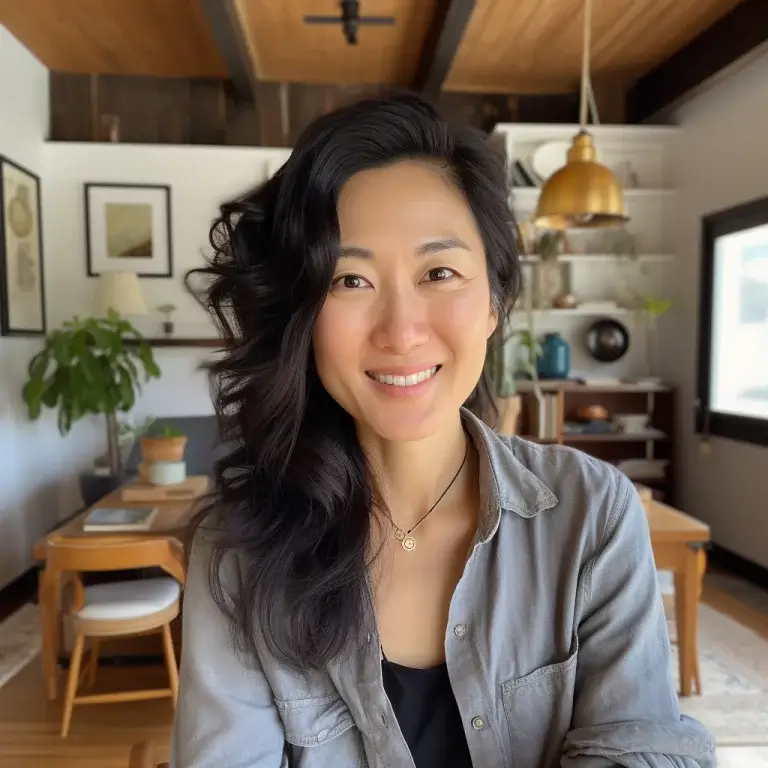Are you looking at your home’s weathered exterior and wondering about a fresh paint job?
You’re not alone. Many homeowners find themselves weighing the investment against their budget, trying to determine whether now is the right time to refresh their home’s exterior appearance.
But how much should you expect to pay? What factors cause prices to vary? And is it worth hiring professionals, or should you tackle it yourself?
This guide will cover everything you need to know about exterior painting costs, helping you make informed decisions without spending a fortune.
Expected Costs for Painting Your Home’s Exterior

Let’s start with the numbers that matter most. The typical homeowner spends between $1,819 and $4,551 on exterior painting, with a national average of $3,178.
If you prefer to think in terms of square footage, expect to pay between $1.50 and $4 per square foot. This means:
| Home Size (Square Feet) | Typical Price Range |
|---|---|
| Small (1,000 sq ft) | $1,500 – $4,000 |
| Medium (2,000 sq ft) | $3,000 – $8,000 |
| Large (3,000 sq ft) | $4,500 – $12,000 |
But these are just averages. Your actual costs could fall outside these ranges depending on several key factors we’ll explore next.
Why Prices Fluctuate: Six Key Cost Determinants
Understanding why prices fluctuate can help explain the broader economic dynamics. Below are six key factors that influence cost changes:
1. Your Home’s Height Matters
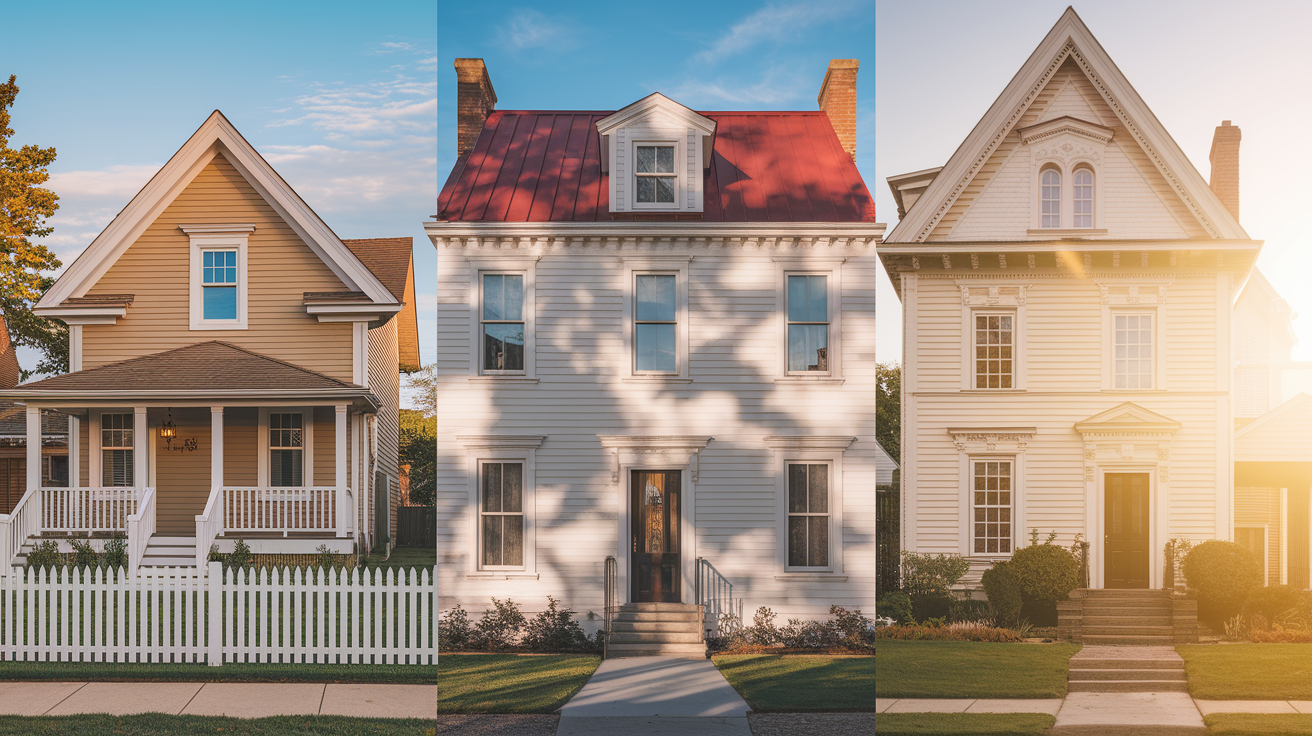
The numbers tell a clear story about how your home’s height affects painting expenses:
- Single-story homes: $1,500 – $3,500
- Two-story homes: $3,000 – $6,200
- Three-story homes: $4,500 – $10,000+
Why Taller Homes Cost More to Paint
When painters work on taller structures, they face several challenges that directly affect pricing:
- Equipment Requirements: Taller homes need specialized equipment like extension ladders, scaffolding, and safety harnesses.
- Time Factors: Working at height is more time-consuming as painters must carefully move equipment and maintain safety protocols.
- Safety Considerations: Higher elevations present greater risks, requiring additional safety measures and sometimes specialized training.
- Accessibility Challenges: Reaching difficult spots safely takes extra time and skill.
2. Exterior Materials Make a Big Difference
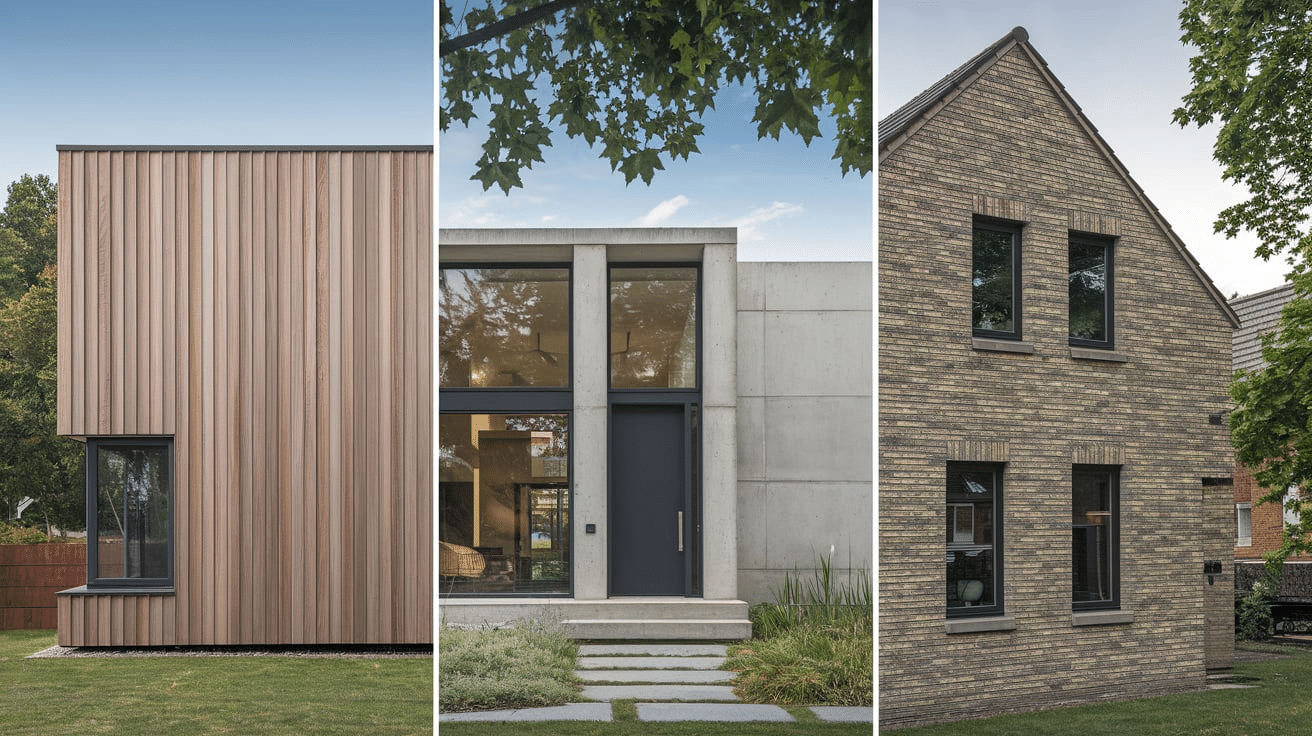
Different materials require varying amounts of paint, preparation methods, and specialized techniques, all of which affect your final budget.
Material-Specific Cost Breakdown
| Exterior Material | Cost Range | Key Characteristics |
|---|---|---|
| Vinyl Siding | $600 – $3,500 | • Relatively smooth surface • Takes paint well with proper preparation • Requires specific paint types for good adhesion |
| Wood Siding | $700 – $3,000 | • Absorbs more paint than other materials • Requires thorough preparation and often primer • May need repairs before painting begins |
| Metal/Aluminum Siding | $400 – $3,500 | • Often needs cleaning before painting • Specialized paints are required for proper adhesion • Tends to be one of the more economical surfaces |
| Concrete Surfaces | $500 – $3,000 | • Porous texture requires more paint • Needs a proper primer for good results • Often requires special moisture-resistant paints |
| Stucco Exteriors | $1,400 – $6,000 | • Very texture-dependent pricing • Often requires repairs before painting • Takes more paint due to surface irregularities |
| Brick Exteriors | $3,500 – $10,000 | • Most expensive to paint due to porosity • Requires specialized preparation • Takes significantly more paint than smooth surfaces |
3. Paint Quality & Quantity Requirements
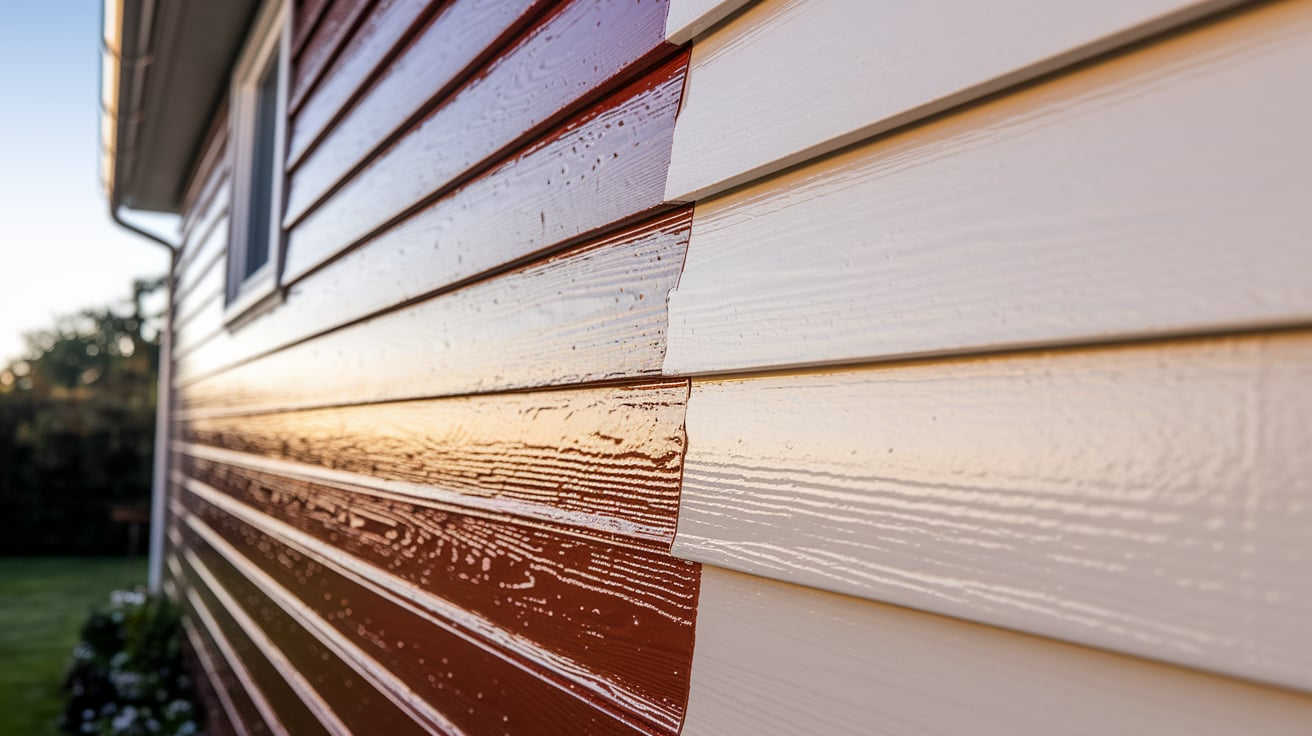
The paint you choose makes up a significant portion of your total exterior painting budget. Quality varies considerably, affecting both immediate costs and long-term value.
Paint Price Categories
Economy paints: $20-$30 per gallon, these options offer low upfront costs but last only 4-7 years, making them ideal for temporary needs or when cost is the main concern.
Mid-grade paints: $30-$40 per gallon. These paints provide better coverage and durability than economy options, lasting about 5-8 years.
Premium paints: $40-$60+ per gallon. Higher-quality paints offer superior coverage, improved weather resistance, and better color retention. Although pricier initially, they require fewer coats and last 7-10 years, providing better long-term value.
Most homes need 10 to 20 gallons of paint, depending on size and surface. Premium paints cost more initially but provide better long-term value due to their durability.
Paint Finishes and Their Costs
Flat/matte finishes (lowest cost): Hide surface imperfections well, suitable for older homes, but harder to clean.
Eggshell/satin finishes (mid-range) are easier to clean and slightly reflective. They are ideal for most exterior surfaces and balance appearance and function.
Semi-gloss/high-gloss finishes (highest cost) are the most durable and washable. They highlight details for trim and accents and offer maximum protection in high-wear areas.
4. Preparation Requirements
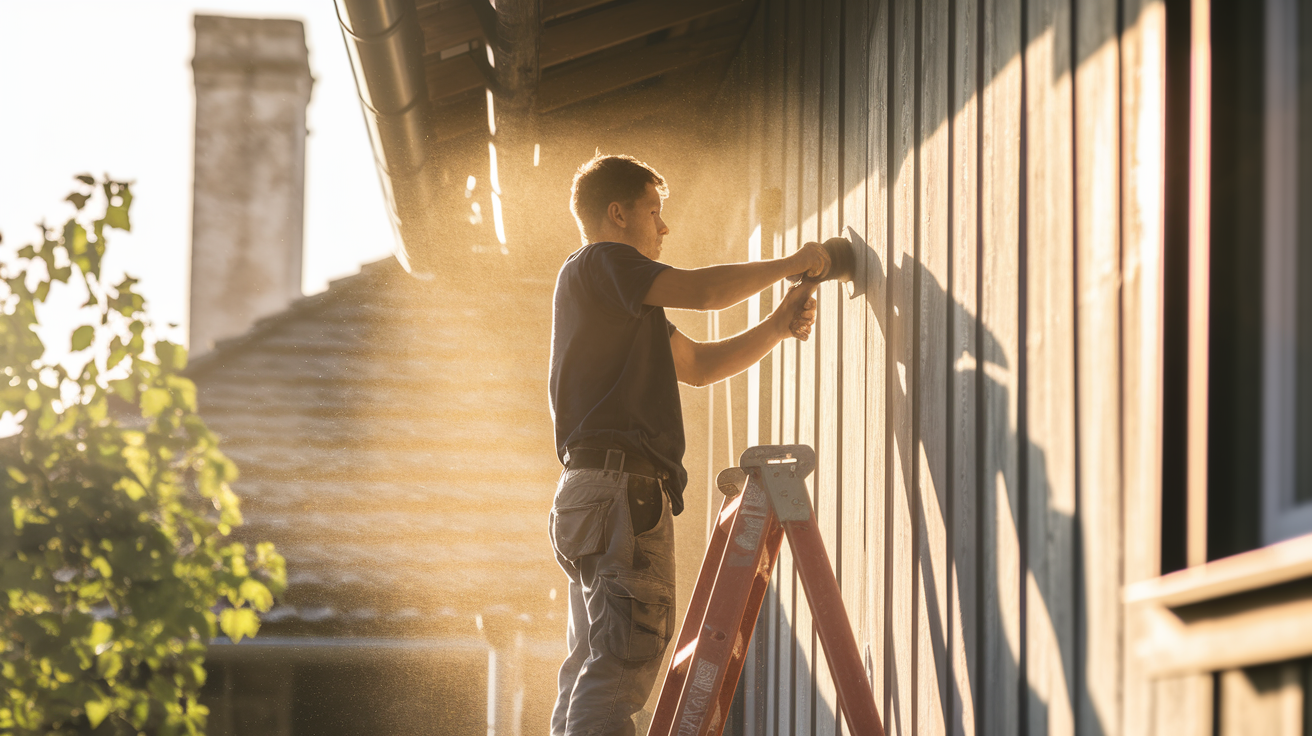
When budgeting for exterior painting, homeowners often overlook preparation costs, which can add 25-50% to the total investment.
Preparation Cost Levels
Basic preparation: $200-$400: Involves simple cleaning and minor scraping, suitable for homes in good condition with minimal paint wear.
Moderate preparation: $400-$1,000: Includes power washing, scraping, and minor repairs, ideal for houses not painted in 7-10 years.
Extensive preparation: $1,000-$2,500+: Requires major repairs, stripping, caulking, and priming for homes with significant paint failure or structural issues, often necessary for historic homes or those with deferred maintenance.
Common Additional Preparation Services
Beyond the basic preparation categories, specific services may add to your total:
Caulking perimeter: $200-$500. Sealing gaps around the home’s exterior prevents moisture intrusion and improves energy efficiency.
Window recaulking: $50-$70 per window. Properly sealed windows protect against water damage and reduce drafts.
Power washing: $240-$400 Professional cleaning removes dirt, mildew, and loose paint to create a clean surface for new paint.
Mold remediation: $1,100-$3,400. When mold is present, professional treatment is necessary before painting can begin.
Wood repair for rot or pest damage: $250-$3,000+ Repairing or replacing damaged wood ensures the new paint has a solid foundation.
5. Regional Price Variations
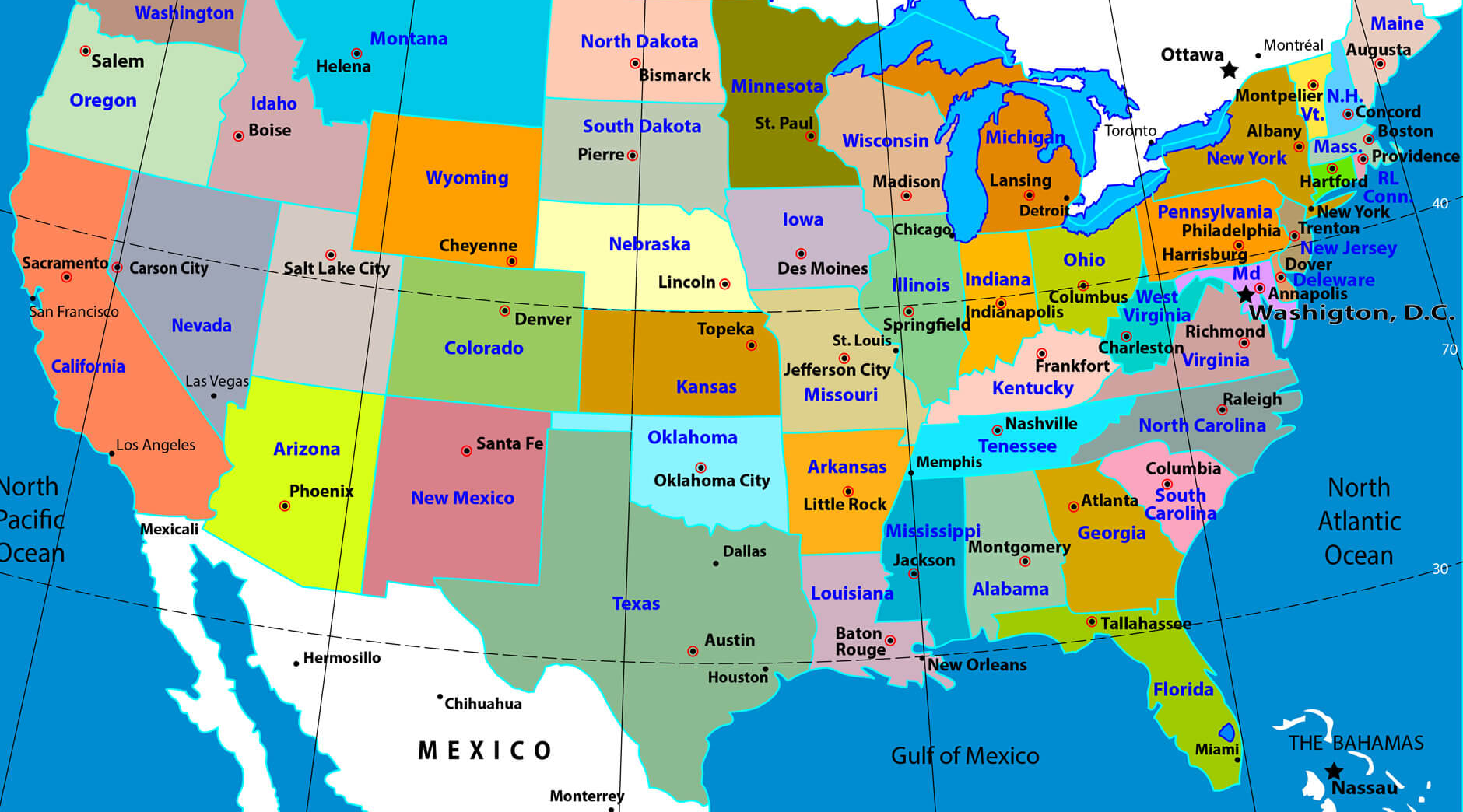
Your location plays a major role in determining costs:
| U.S. Region | Average Cost (1,500 sq ft home) |
|---|---|
| New Mexico | $4,800 |
| Mideast | $4,300 |
| Far West | $4,500 |
| Southeast | $3,315 |
| Great Lakes | $3,000 |
| Rocky Mountains | $2,900 |
| Southwest | $2,400 |
| Plains | $2,300 |
These variations reflect differences in labor costs, climate considerations, local regulations, and market competition.
6. Additional Elements Cost to Consider
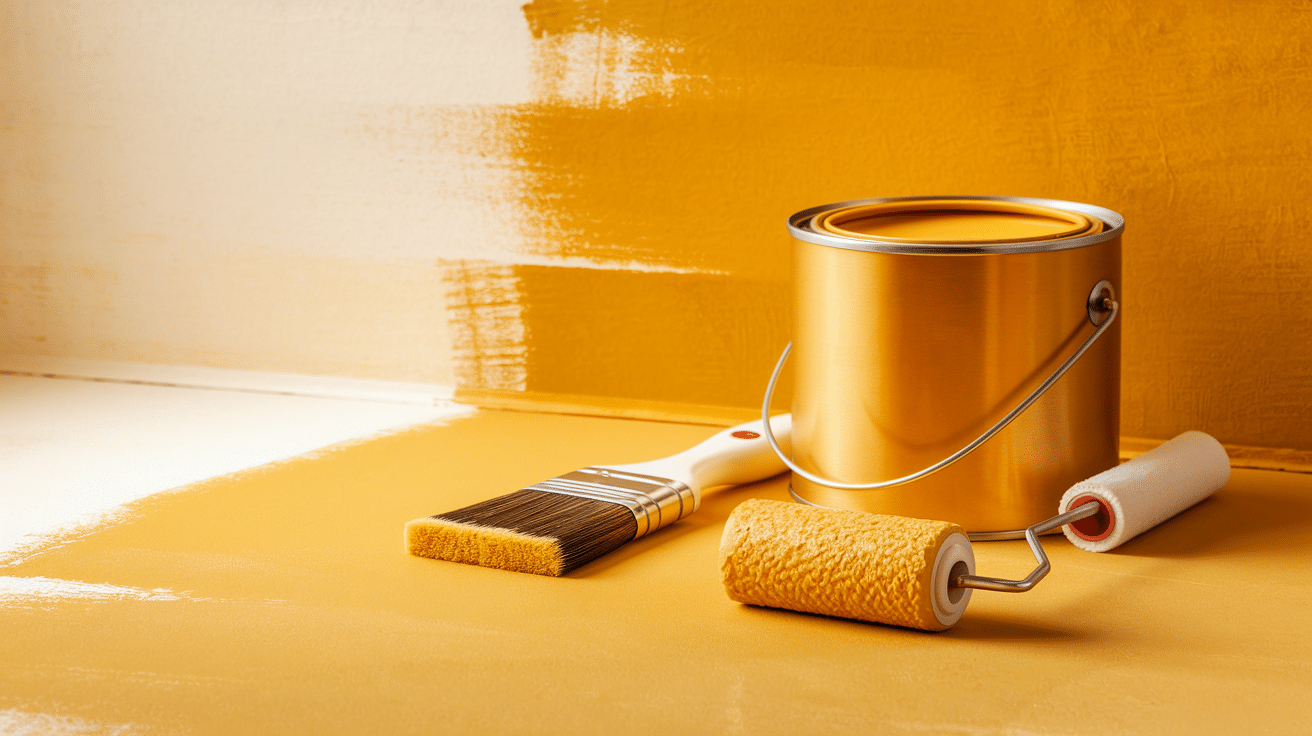
When updating your home’s exterior, consider other outdoor elements for a cohesive look. Painting these features during your main project often saves money compared to doing them separately.
1. Trim: $2 per linear foot Refreshing trim creates crisp lines that highlight your home’s architectural features and complete the exterior’s overall look.
2. Garage: $1,500-$3,000 A freshly painted garage creates visual harmony with your main house and significantly enhances curb appeal, especially for front-facing garages.
3. Porch: $1,200 Your porch serves as a transition between outdoors and indoors, making it an important visual element that welcomes guests to your home.
4. Window sashes: $150 Newly painted window sashes can dramatically improve your home’s appearance while protecting against moisture and the elements.
5. Gutters: $500 While often overlooked, freshly painted gutters blend seamlessly with your home rather than standing out as an eyesore.
6. Soffit and fascia: $2.50-$6 per linear foot. These components protect your roof’s edge and ventilate your attic space while contributing to your home’s overall appearance.
7. Exterior doors: $150-$500 each. Front doors make a strong first impression, while side and back doors contribute to your home’s overall color scheme.
8. Deck: $975 A freshly painted or stained deck looks better and protects against moisture, sun damage, and foot traffic.
DIY vs. Professional Painting: Making the Right Choice
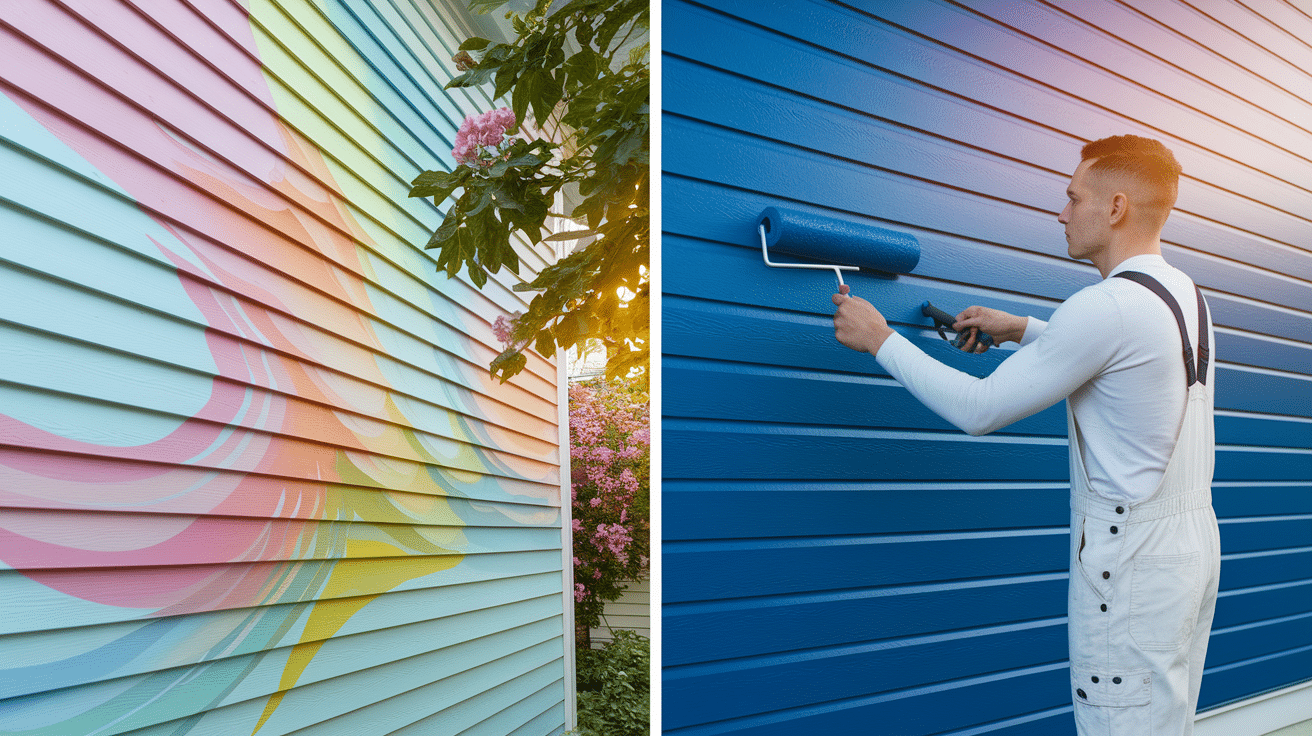
When considering an exterior painting project, many homeowners weigh the potential savings of a DIY approach against hiring professionals.
While doing it yourself might seem cost-effective at first glance, understanding the complete picture helps make an informed decision.
| Factor | DIY Painting | Professional Painting |
|---|---|---|
| Material Costs | $500 – $1,000 (for materials only) | $1,000 – $3,000 (includes professional-grade materials) |
| Equipment Costs | $200 – $400 (basic supplies) | Included in the price (professional tools and equipment) |
| $100 – $500 (ladders, scaffolding) | ||
| $100 – $2,000 (sprayer, optional) | ||
| Safety Gear | $50 – $100 | Included in the price |
| Time Investment | 5 to 9 full days (including prep, painting, cleanup) | 2 to 3 full days (including prep, painting, cleanup) |
| Skills Required | Knowledge of surface prep, paint types, techniques, and safety | Expert skills in preparation, application, and safety |
| Potential Risks | Mistakes, fixes, or premature repainting | Guaranteed quality with professional finish |
| Overall Cost | $500 – $1,000 (materials + equipment) | $2,000 – $5,000 (materials, labor, equipment) |
Making Your Decision
When choosing between DIY and professional painting, assess your time, skills, comfort with heights, and expected value. For many homeowners, DIY’s initial savings can be negated by time investment, mistakes, and shorter paint job lifespan.
Professional work usually offers better long-term value. If you enjoy hands-on projects and have painting experience, DIY might be fulfilling.
However, for those prioritizing time, quality, and durability, professional painters usually provide a superior investment.
Long-Term Considerations: Frequency and Maintenance
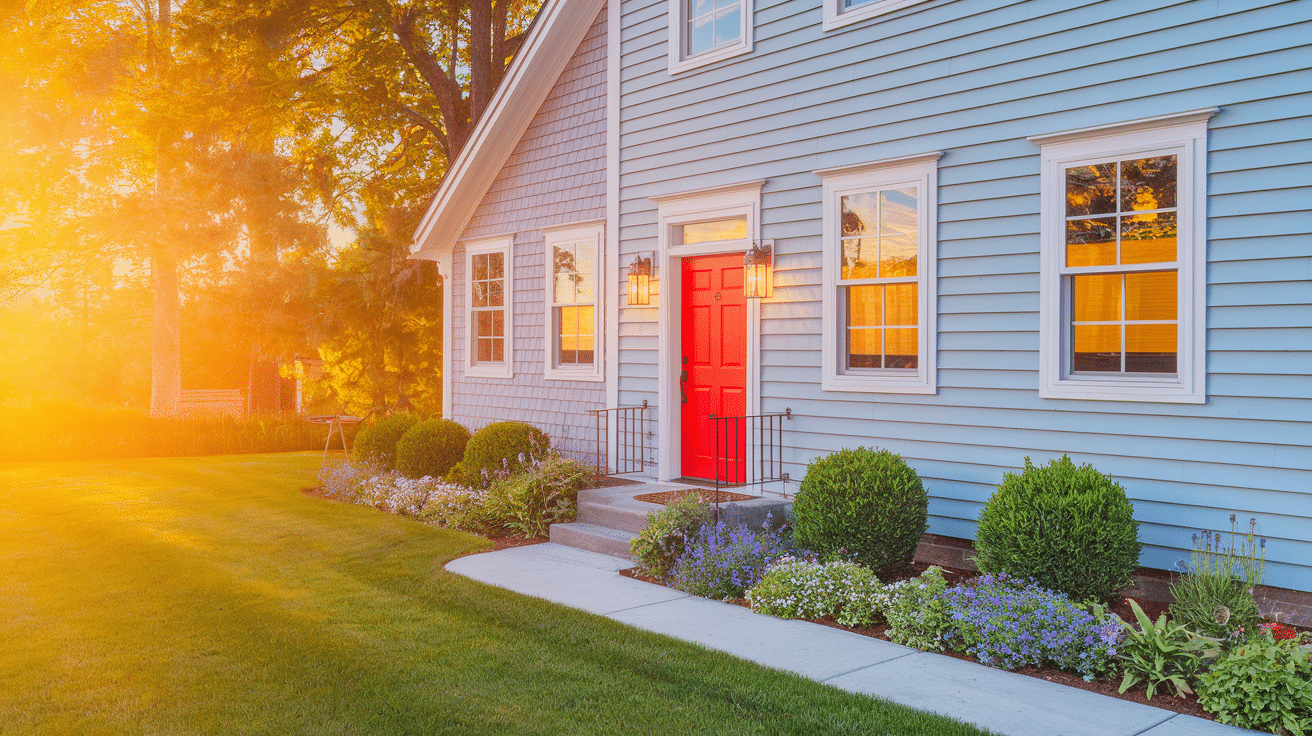
Repainting your home’s exterior saves money and protects property. Different materials have varied schedules, and local climate significantly influences maintenance needs.
Repainting Timelines By Material
Wood siding: Every 3-7 years. This natural material requires more frequent attention as it’s susceptible to moisture damage, cracking, and peeling.
Aluminum siding: Every 5-10 years More durable than wood but still needs protection from oxidation and the elements.
Stucco: Every 5-10 years. While sturdy, stucco can develop hairline cracks that allow moisture penetration if not properly maintained.
Brick: Every 15-20 years (if painted). Painted brick has impressive longevity but requires proper preparation when it’s time to refresh.
Money-Saving Strategies Without Compromising Quality
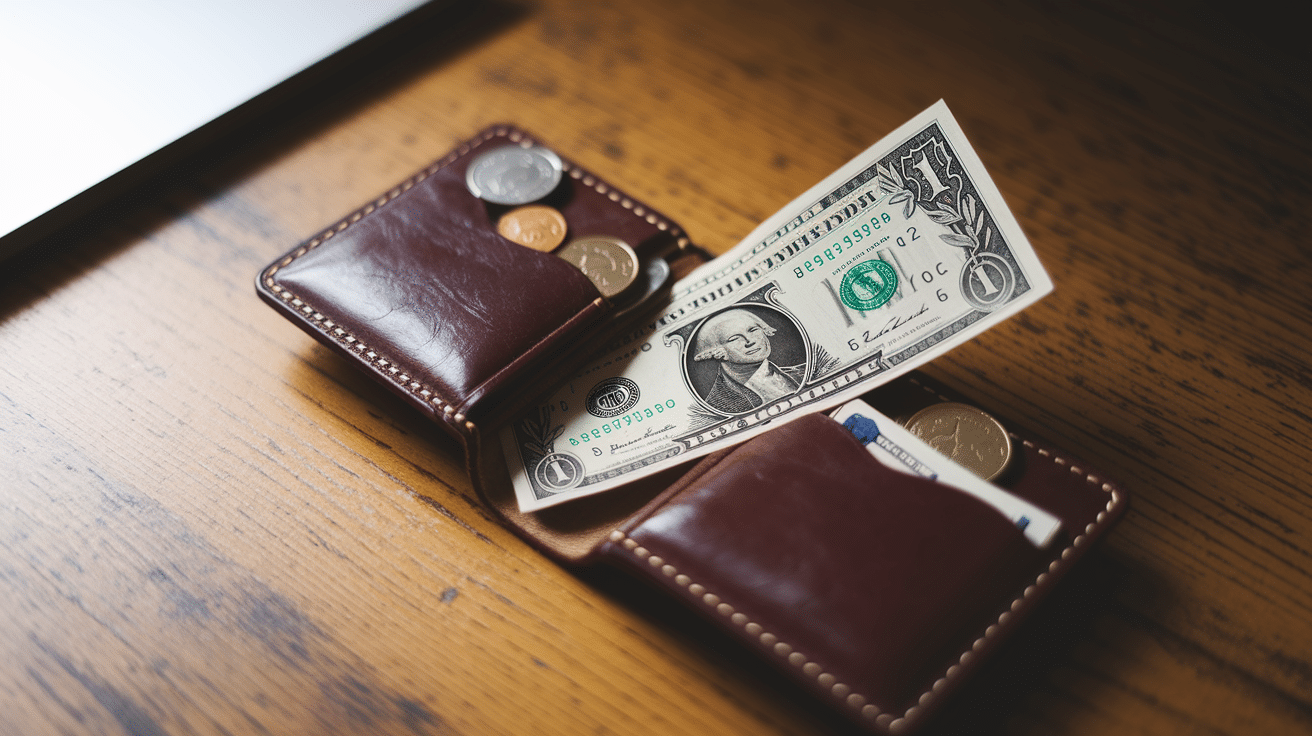
Looking to maximize your budget when planning your home’s exterior paint job? These practical approaches can help you reduce costs while still achieving excellent results.
Strategic Timing
Schedule during off-peak seasons like late fall or early spring for better rates, as painting companies are less busy. Many contractors offer 10-15% discounts during these periods.
Book early for potential discounts. Planning several months ahead can secure better pricing and lock in rates before they increase.
Coordinate with neighbors for group rates. When several homes in the area need painting, contractors can save on travel costs and often pass savings to homeowners.
Smart Material Choices
Choose mid-grade paints with solid warranties for a balance of cost and durability. They often match the performance of premium brands.
Select colors that need fewer coats; lighter hues cover dark surfaces better, reducing paint and labor needs. Consider repainted only the most weathered sides, especially south and west-facing walls that deteriorate faster.
Final Thoughts
Exterior painting represents a significant investment in your home’s value, appearance, and protection.
While costs vary widely based on the factors we’ve discussed, remember that quality work pays dividends through longevity and reduced maintenance expenses.
You can do it yourself or hire professionals; proper planning makes all the difference. Take time to understand your specific needs, gather multiple quotes, and consider both immediate budget concerns and long-term value.
With the right approach, your freshly painted home will not only look wonderful but will provide lasting protection against the elements for years to come.


